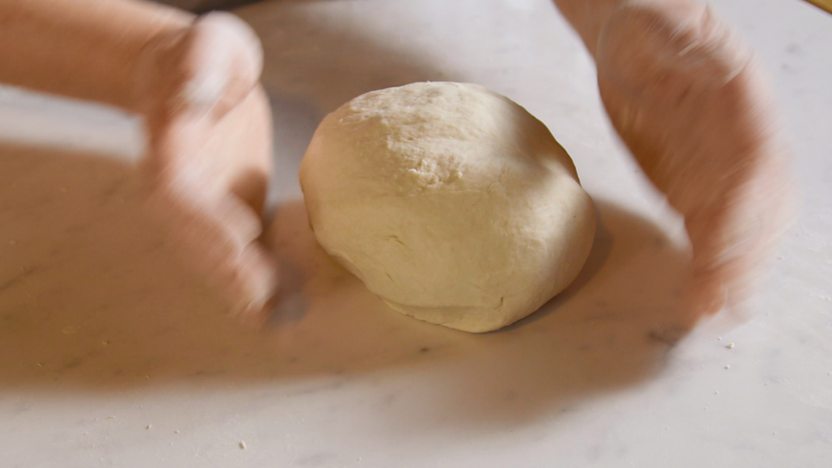Sourdough tin loaf
Making your own sourdough loaf, the ultimate weekend project. Make sure to have plently of salty butter to go with.
Ingredients
For the starter
- 500g/1lb 2oz wholemeal flour
- 250g/12oz white flour
For the sourdough
- 247g/9oz water (28–32 degrees Celsius)
- 125g/4½oz starter (from above)
- 286g/10oz strong white flour
- 95g/3½oz strong wholemeal flour
- 10g/oz fine salt
Method
To make the starter, mix the wholemeal flour with 200ml/7fl oz warm water in a clean jar with a lid on. Mark the side of the jar with either a rubber band or a marker pen so you can track the progress.
Leave the jar on the counter for 2–3 days to allow the natural yeast and bacteria to grow. It will start to bubble and you’ll get a whiff of fermentation. Once you can see this activity, remove 80g/3oz of your newly formed starter and mix with 40g/1½oz of white flour, 40g/1½oz wholemeal flour and 80g/3oz warm water in a new clean jar.
Repeat the step above for as many days until you notice the starter starts to double in size after 5–6 hours. Your starter should now be ready to use.
To make the sourdough, add the water and starter into a mixing bowl. Squeeze the starter in your hands to break it down into chunks. Mix in both the flours until completely combined.
Scrape down the sides of the bowl and leave to rest with a tea towel covering for 30 minutes.
Add the salt and 20g/¾oz water, mix until fully incorporated. This can be done by squeezing the dough in your hands as well as folding over itself.
Perform a stretch and fold set and leave to rest for 30 minutes.
Repeat 3 more times. The dough is ready when it feels light and airy when you softly pinch the dough. It should have risen by a third to a half.
You can test the amount of air in the dough by cutting a small section of the dough mix and dropping into a jug of water. If the ball floats or sinks to the middle and rises it is ready.
Don’t be afraid to wait longer before moving onto the next step if the dough is sinking and not rising, - this can be dependent on room temperature.
Next, pre-shape the loaf by tipping onto the table and rounding into a ball. Rest for 15–20 minutes covered with a tea towel.
Lightly oil a 900g/2lb loaf tin with a neutral oil. Shape the dough to fit in your tin and place inside, covering the top with a tea towel.
Prove the dough on the counter until when you press the top of the loaf softly, the indentation bounces back slowly but not 100 per cent of the way. If it springs back, it’s not ready and if it doesn’t return, it is starting to overprove. This could take between 1–4 hours depending on the temperature of the loaf and the room.
When the loaf is around 1–2 cm from the top of the tin, preheat the oven to 230C/210C Fan/Gas 8. Place a wire rack a third of the way up the oven, and a small heat-proof bowl or baking tray at the base of the oven.
Reduce the temperature of the oven to 200C/180C Fan/Gas 6. Place the loaf in the oven then add some water into the oven-proof bowl or tray. Bake for 20 minutes. Then increase the temperature to 220C/200C Fan/Gas 7, for around 20 minutes minutes until dark on top.
Once baked, remove from the tin and place on wire rack to cool.



